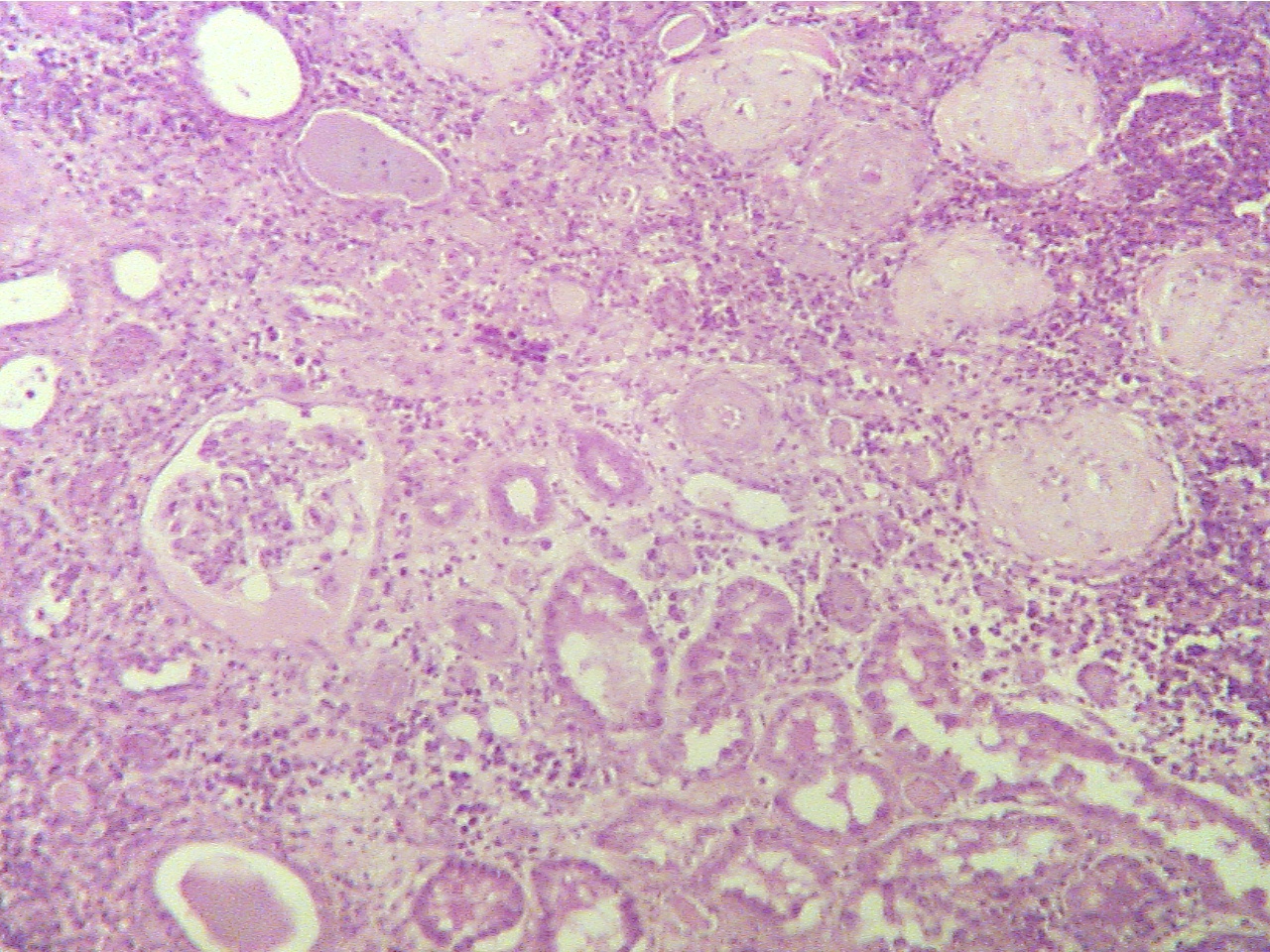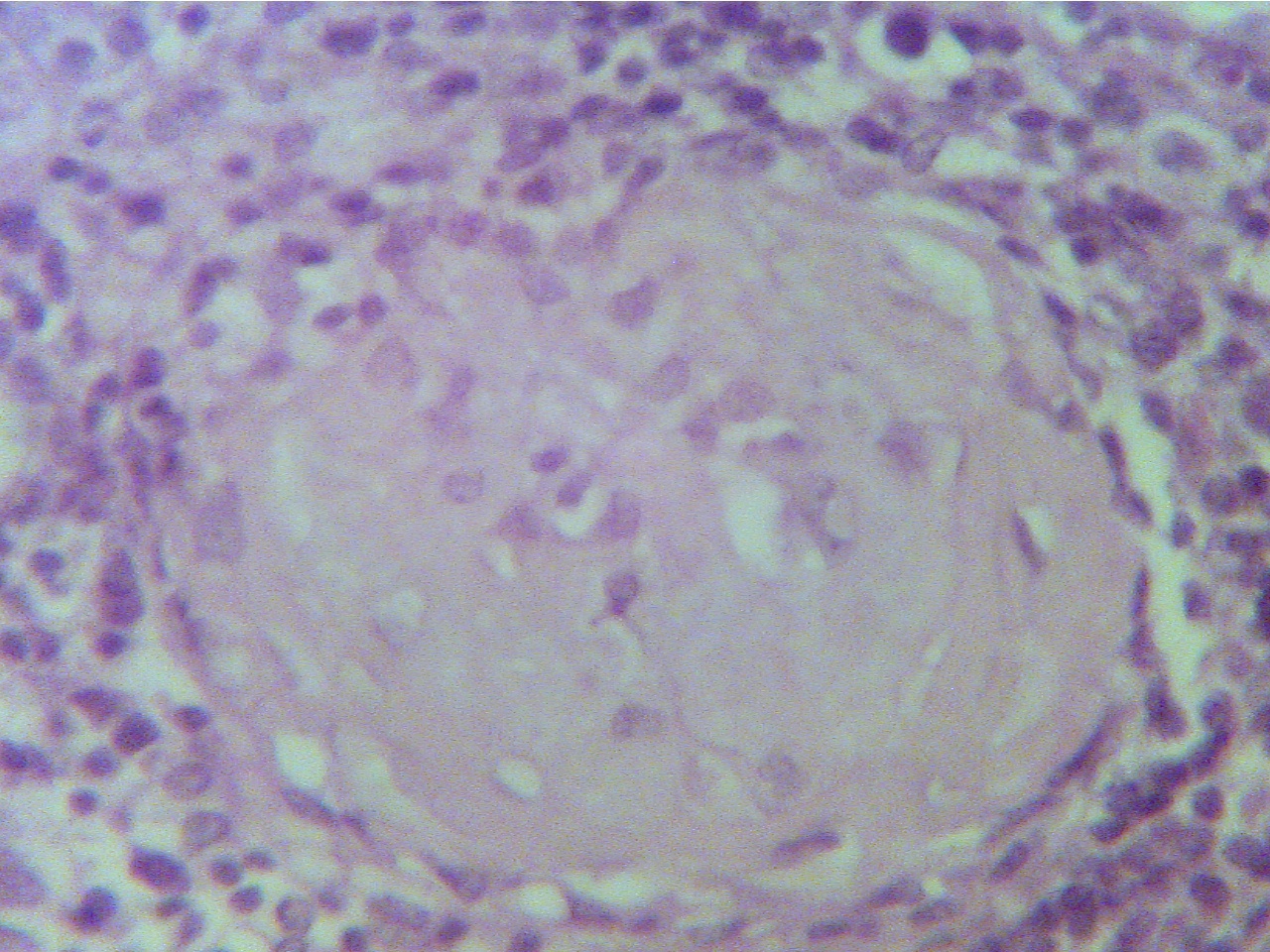Return to Slide List
Chronic Pyelonephritis - (PH 1728) (pp. 699-701)
(Be able to identify this slide as end stage kidney; identify normal
glomeruli, abnormal glomeruli, tubules, and fibrotic inflamed area; and
differentiate between this slide and slides showing normal kidney.)
In chronic pyelonephritis, not only the tubules but also the
glomeruli have been damaged. Some of the tubules are filled with casts,
some of the glomeruli have become hyalinized (appear solid and pink)
and there are scattered patches of white blood cells. Compare this slide
with the slide of normal kidney and with Fig. 46-6, p. 700, Fig. 46-11,
p. 706.
Pyelonephritis with hyalinized glomeruli (100X2.0)
Hyalinized glomerulus(400X2.3)


Cast in tubule (bottom left), normal glomerulus
Hyalinized glomerulus (mostly solid pink with few
(middle left), hyalinized glomeruli (upper
right
dark blue nuclei) surrounded by small dark blue
quadrant), few tubules (lower right
quadrant),
inflammatory cells rather than tubules.
inflammatory cells and fibrosis (areas between structures)
This is an End Stage Kidney.
Return to Slide List
Copyright 2020:
Augustine G. DiGiovanna, Ph.D., Salisbury University, Maryland
The materials on this site are licensed under CC BY-NC-SA
4.0 .

https://www.biologyofhumanaging.com/Figures/CC-BY-NS-SA%20image.jpg
Attribution-NonCommercial-ShareAlike
This license requires that reusers give
credit to the creator. It allows reusers to distribute, remix, adapt, and build
upon the material in any medium or format, for noncommercial purposes only. If
others modify or adapt the material, they must license the modified material
under identical terms.
Previous print editions of the text Human Aging: Biological Perspectives are ©
Copyright 2000, 1994 by The McGraw-Hill Companies, Inc. and 2020 by Augustine
DiGiovanna.
View License Deed |
View Legal Code

